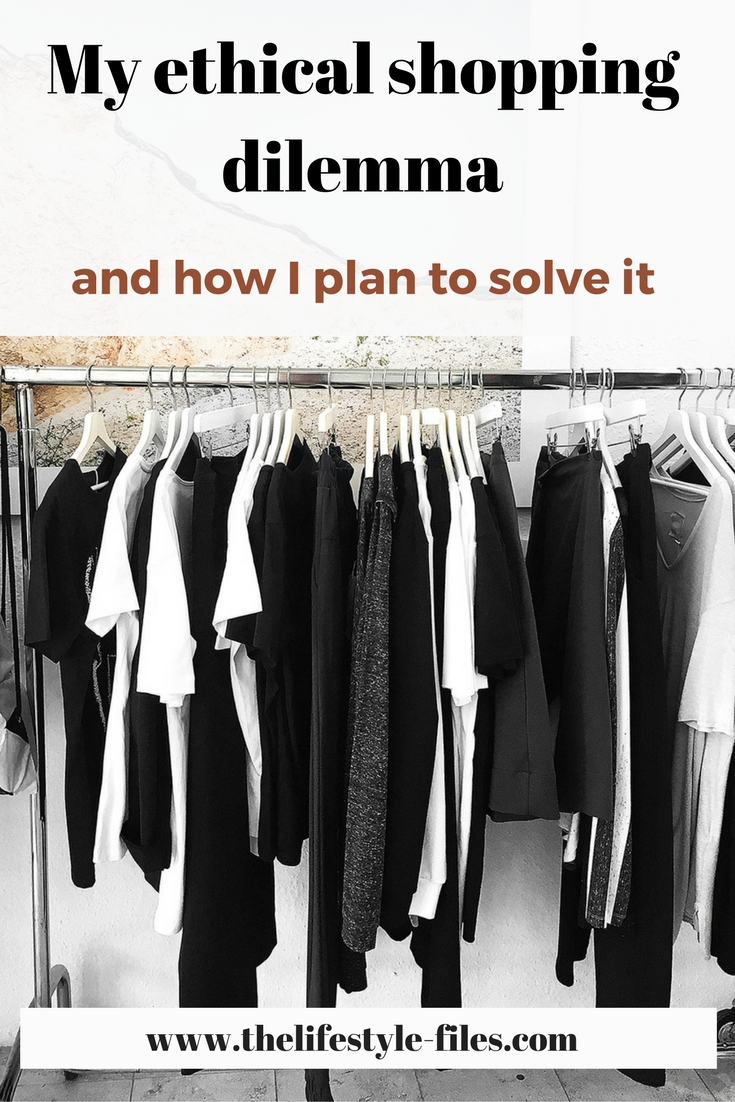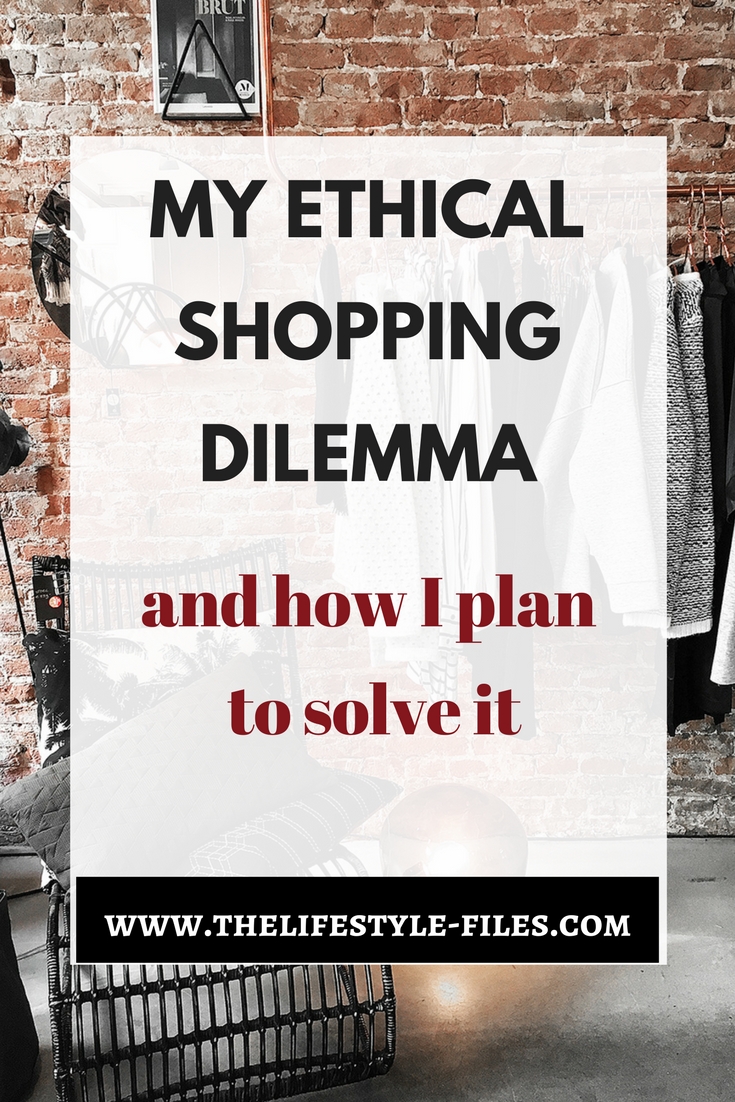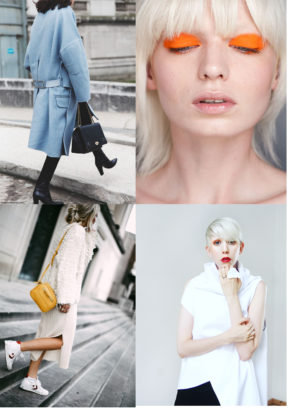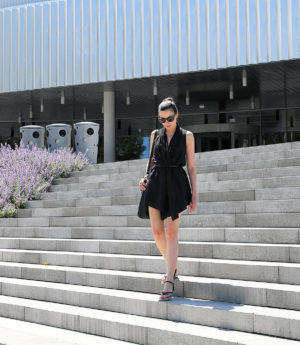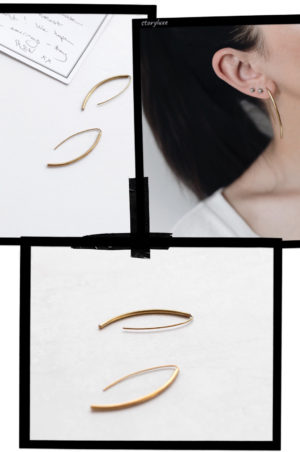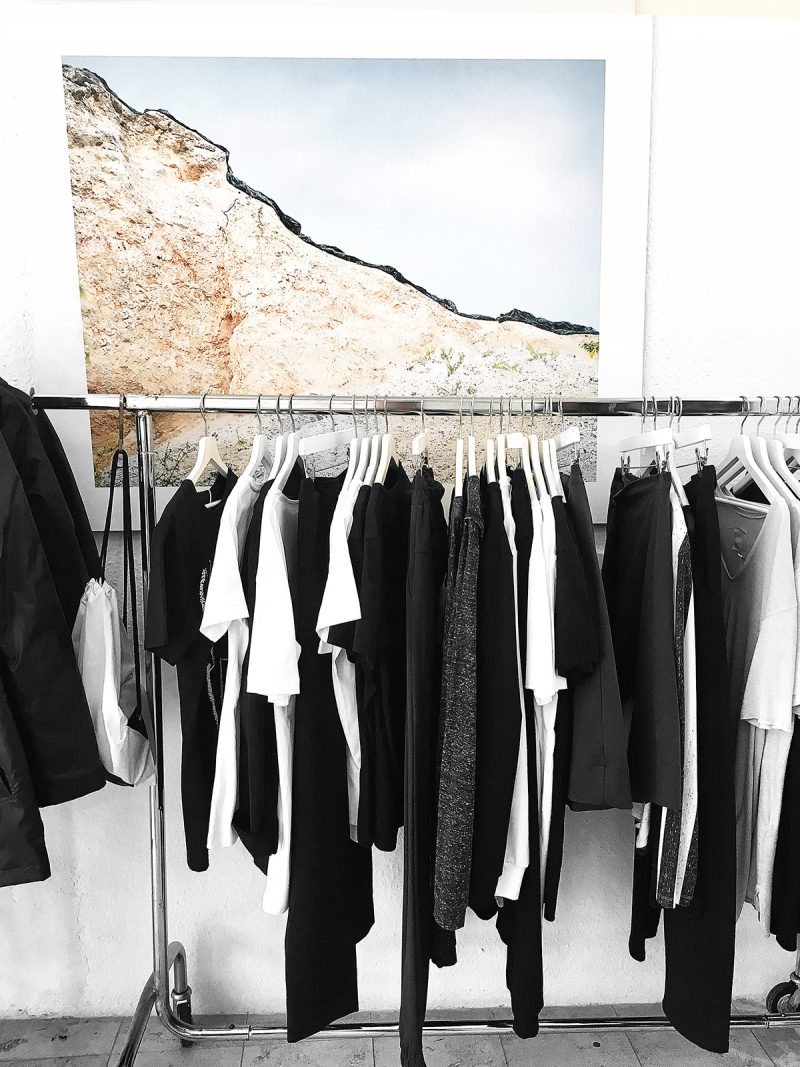
Good shopping choices are one of the issues I’m most enthusiastic about, whether it’s about fashion, beauty, or food, and a cornerstone of a conscious, smart lifestyle in my opinion.
I already wrote in detail about why I find the concept of slow fashion endearing and what principles determine what I buy and don’t buy.
But it’s not a totally easy journey and I’m still going with baby steps. Ethical fashion for example is still an area I haven’t fully immersed myself into and there are reasons for that.
My shopping evolution
If family legendry is a credible source, we can say my relationship with fashion and clothes started quite early. I loved really feminine dresses (that clearly didn’t stick), playing with my mother’s jewelry, trying on high heeled shoes and shuffling in them triumphantly, and carrying all my treasures in a small plastic tote everywhere with me.
I started to dress myself at the beginning of elementary school – I still remember one of my earliest glorious creations, when I paired a black and white checked bicycle pant with a short bright yellow top and topped it off with a same yellow-colored sweater tied on my waist. Gotta love 90s fashion. At this point though I think it was still my mother who bought all of our clothes, which kind of ensured a level of quality.
Bear in mind, this is Hungary in the 1990s we’re talking about – a few short years after the fall of Communism. We didn’t have any of the big high street brands that teenagers wear nowadays, people mainly shopped in small local boutiques that had more quality, small batch production clothes. (Of course, these boutiques are nowhere to be found today, they have been totally stamped out by shopping malls and mass labels.)
Shopping habits started to change in the late 1990s. The first American-style shopping malls were built and more and more fashion brands started to open stores in the city.
Enter fast fashion
Stores like Mexx and Mango were like wonderland for me. It all seemed so design-forward, modern, and trendy. Though my mother often curbed my enthusiasm, as she didn’t like completely synthetic materials, I for one couldn’t give a damn about fabrics at the time, which meant some unfortunate sparring between us (and more often than not, me sulking in the background of the store). But as usually is the case with children-parent quarrels, I can now, with my adult mind, say that she was of course right. Slowly, but surely her teachings about quality, fabrics, and what you have to pay attention to when buying clothes started to sink in, and it’s still something that greatly determines my shopping choices today.
The epitome of fast fashion brands, H&M and Zara opened their first stores in Hungary in the mid-2000s. Everything that I now find problematic with fast fashion seemed like a step forward at the time: a great selection of fashionable pieces, newer and newer items every month, and of course, affordable prices. They were my go-to shopping destinations for a few years from then on.
The first time I started to venture outside the typical fast fashion chains were around my mid-20s. I still had no idea about the background of fast fashion or any kind of ethical problems – I simply wanted to have and buy things not a lot of people had. As online shopping was not a thing then, I mostly saved for and shopped when I was traveling abroad. I researched stores we didn’t have and tried to buy new and unique pieces. Quality at that time was already a deciding factor, along with design and details.
It wasn’t until 2 or 3 years ago that I started to read more and more about the dark side of fast fashion. I also started to become more conscious about my spending and lifestyle choices. I shopped a lot less, but a lot more strategically. And slowly I began to learn more about fashion, production, and environmental and social costs and started to seriously think about all my fashion choices.
Where I am now
As you can see, it wasn’t like I woke up one day enlightened about consumerism, shady marketing, and the true cost of fashion for others. It’s a journey that I feel like I’m still at the beginning.
If I had to list all the factors that I consider important when choosing what to buy and who to buy from, I’d include the following (in no particular order):
+ Quality: quality fabrics, production, stitching, details, durability, and longevity
+ Fair wages for the workers and safe working conditions
+ A consideration for the environmental effects of production
+ Design and style (or more precisely, to match my aesthetics)
+ Price
+ Accessibility (meaning I can actually able to buy the clothes online or offline)
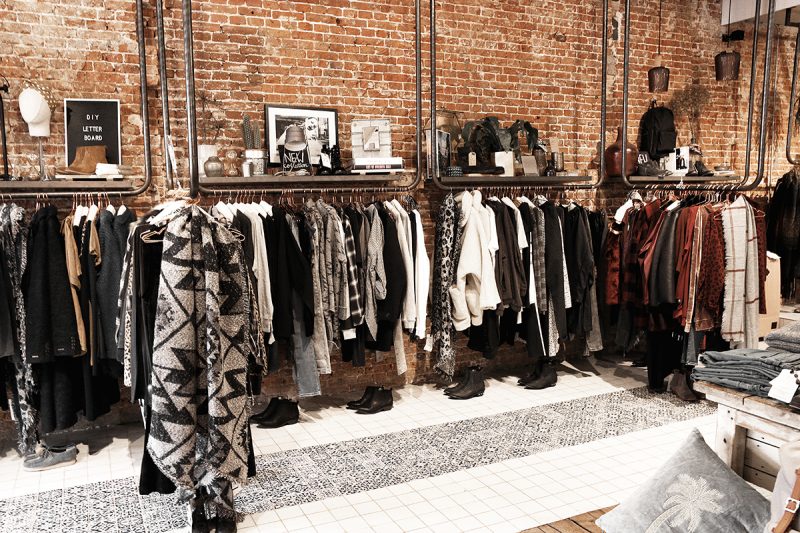
So, what exactly is my dilemma?
My dilemma lies in the fact that theory and action are two completely different things. What I would like to buy and what I’m buying is not totally aligned yet. Here’s what makes the situation a little bit difficult for me
Lack of knowledge //
For starters, I still have to learn a lot about ethical fashion, sustainable fashion, slow fashion, and many other things. We are all familiar with fast fashion brands, because we see them everyday on the streets, in ads, on bloggers. Ethical brands are a lot less visible unfortunately and sometimes the process of navigating among the totally unknown names is a little bit overwhelming.
Lack of transparency //
Transparency unfortunately is still not the IT thing to do for brands. Often it’s hard to find data on how a certain brand’s clothes are produced, what they do for sustainability or to ensure fair working conditions. Maybe a lack of disclosure in itself signals bad news. Maybe not. Maybe what they say is greenwashing. Maybe they’re genuine.
Limited distribution //
Living in Central Europe has its perks, but awesome shopping opportunities are not one of them (I don’t even know of major ethical brands retailing here in brick-and-mortar stores). Some brands do not even ship here, and the shipping of US brands adds a very significant cost to the price.
Higher price points //
While I adhere to the shop less, even for a little bit more principle, and I’m willing to pay more money for quality and for supporting good brands, I do have a mental limit on how much I’m willing to spend on a piece of clothing. Some brands that I found that matched my expectations were unfortunately over that limit.
Not my aesthetics //
Even if other factors come into play, design, style, and aesthetics remain at near the top of my list of expectations. After all, if I don’t love how a dress looks, why would I buy it? While years ago, eco-friendly and sustainable were not necessarily synonymous with fashion-forward and stylish, this seems to be shifting. More and more ethical brands realize that style, design, and the cool factor should be considered for success just as much as production. I still feel like a lot of ethical brands go for either very simple and minimal or too colorful for my taste.
Do these sound like excuses? I hope not, because this is not how I meant them. I simply wanted to record the starting point as well as a couple of factors that may hinder the spread of ethical fashion brands. A little difficulty has never deterred me from anything though and it’s not going to start now.
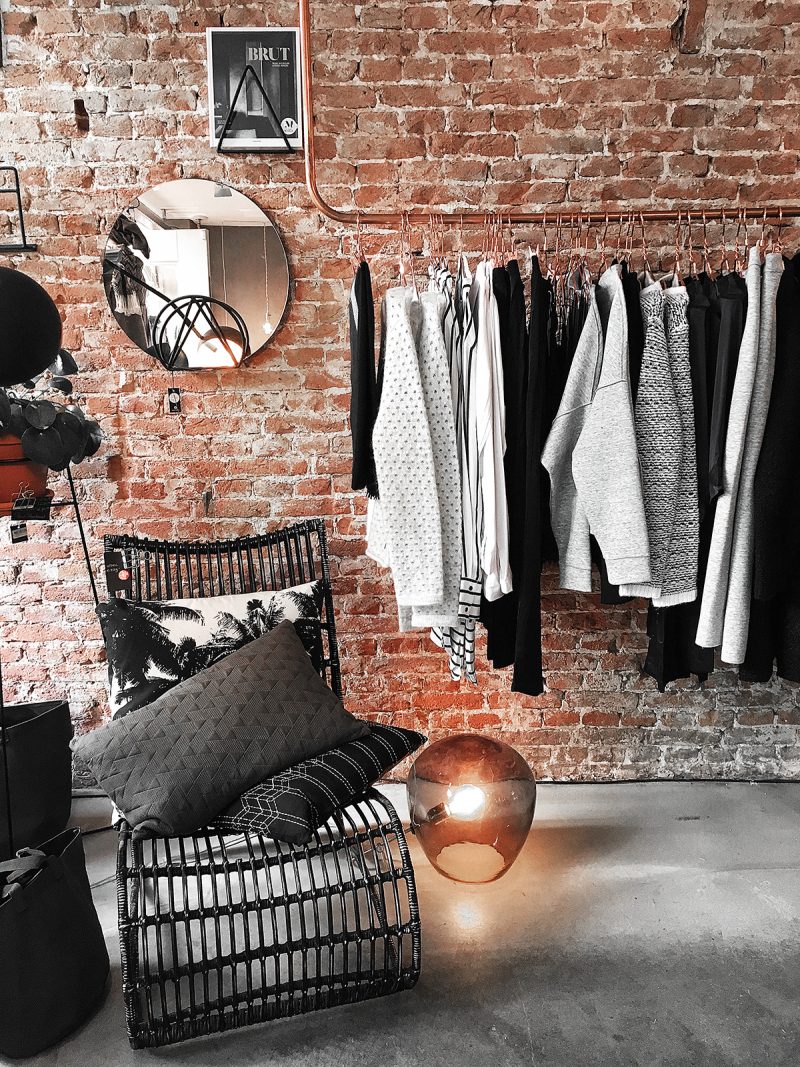
What I’m doing to change and what I plan to
I think there are 4 main things we can do to take a stand against unethical fashion industry practices and cut back on mindless consumption.
Shop less
This is essential and the cornerstone of my lifestyle. I don’t give in to trends, fads, or social fashion pressures. I know my style, I know what I have, and I do not shop just for the sake of it.
Shop for quality and longevity
While I’m not saying that everything in fast fashion stores is of bad quality, the thing is, quality is often at the losing end of fast fashion production. Everything needs to be made faster and cheaper in order to raise those profit margins. But if we choose quality, chances are we don’t have to shop again and again, at least not to replace our clothes frequently.
Discover and choose ethical brands
This is an even more direct mode of voting for issues with our money. I’m determined to explore this a lot more this coming year. My goal is to find at least 2 or 3 ethical brands I can incorporate into my wardrobe.
Actively demand change
Probably this is the seemingly most difficult one for us, simple consumers. However, there are great initiatives we can support or join (like the Fashion Revolution), or can just ask questions of our favorite brands and push them a little more towards transparency.
As I said before, I’m the type of conscious consumer that thinks it’s not an all or nothing game. While I have great respect for people who are able to upkeep their principles and live their life accordingly, for me at the moment, it’s more like a journey.
Please don’t feel discouraged or pressured if you cannot do everything at once. It’s still better to do small steps than do nothing at all.
Do I shop less? Yes. Do I try to find ethical brands or local designer brands? Yes. Do I still occasionally shop at fast fashion stores or buy brands that cannot be considered totally ethical? Yes, to a degree.
This blog itself is a documentation of this journey, so I plan to revisit this issue in the future and share my experiences, what I learn, and hopefully some great findings as well.
In the meantime, please share with me your own shopping stories as well as your favorite ethical brands if you have any. For now I’m going through these lists:
List of ethical fashion brands
Affordable ethical fashion brands
35 fair trade and ethical clothing brands

